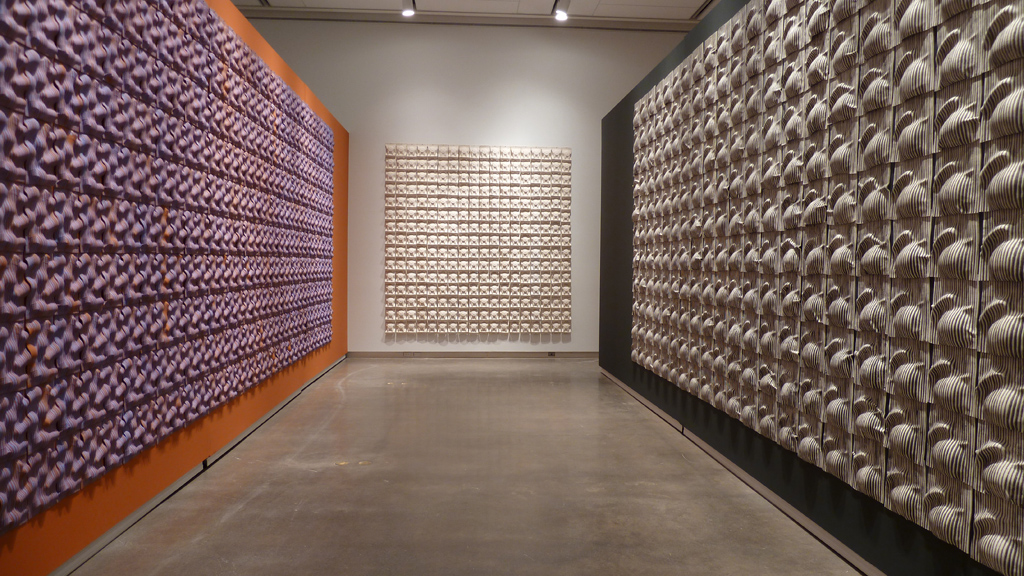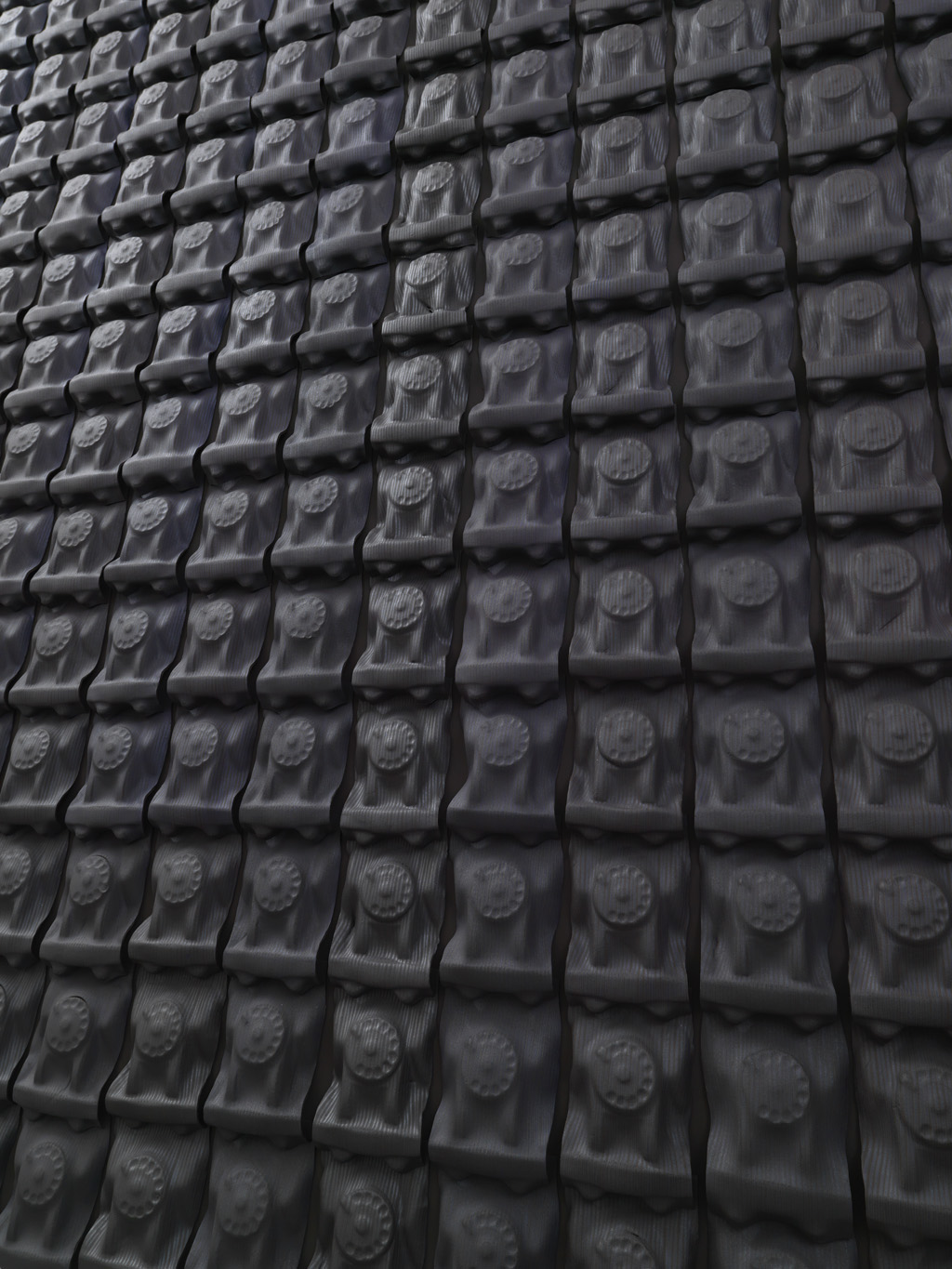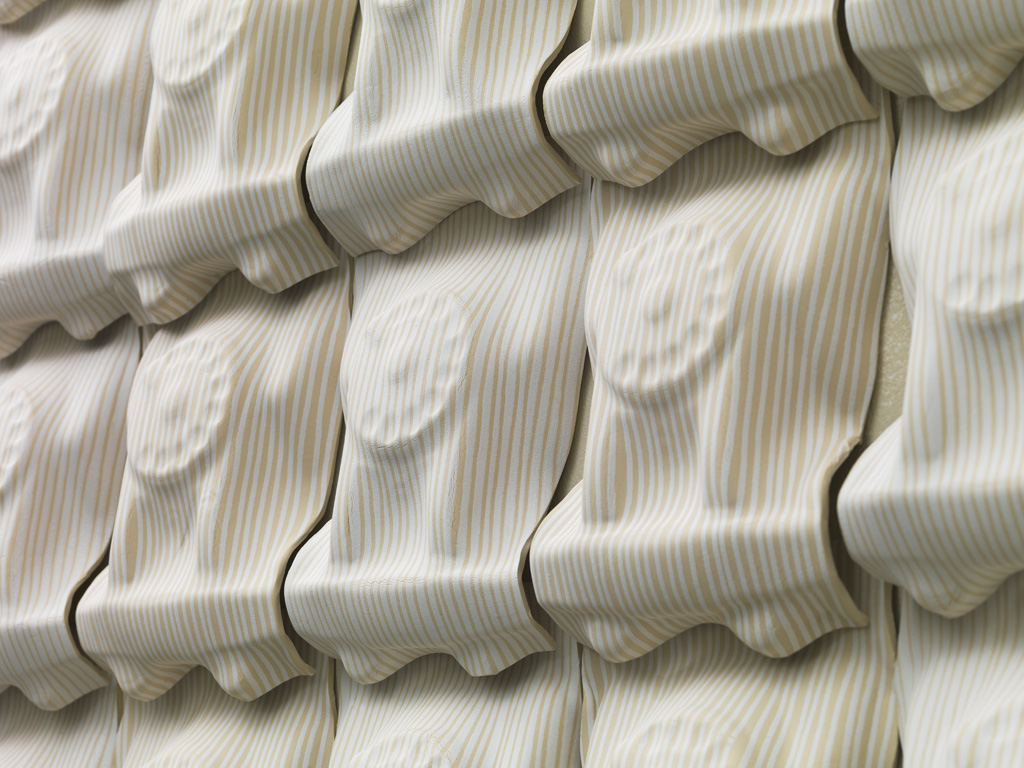
The Antechamber, ceramic, 12' x 28' x 10', installation view, Esplanade Art Gallery, photo Hide Away Studios, 2010-2012

The Antechamber, ceramic, 12' x 28' x 10', installation view, Esplanade Art Gallery, photo Hide Away Studios, 2010-2012

Between The Lines (Dark), detail, photo Hagemeier Fotogafie, 2010

Between The Lines (Dark), detail, photo Hagemeier Fotogafie, 2010

Between The Lines (Light), detail, photo Hagemeier Fotogafie, 2010

Between the Lines (Georgia), ceramic, detail, 24’ x 10’ x 1.5”, 2012

Between The Lines (Georgia), detail, 2012

Between The Lines (Red Deer), ceramic, detail, 24’ x 10’ x 1.5”, 2011

Between The Lines (Red Deer), detail, 2011
The Antechamber presents four installations of hundreds of vacuum-formed ceramic elements printed with contrasting line and colour patterns. These elements, installed in grids, hang like roof tiles, overlapping one another, creating oscillating amounts of visual disturbance as the viewer moves within the space. Making reference to important 19th and 20th century objects of invention that feed the cycle of consumption, the individual ceramic elements were vacuum formed over a 1950s Dutch tabletop telephone, a 1940s GE Streamline Kettle and casts of an incandescent light bulb. With the use of repetition and scale, these works are intended to transform the euphoric anticipation and naïve optimism of invention into the vertiginous state of imbalance relating to consumption.
Artist Ian Johnston brings his architecture and ceramic background to Reinventing Consumption, a dazzling installation in three parts. The first section, The Inventor’s Room, presents artifacts related to his original experiments and investigations into a vacuum-forming process for ceramics. The Antechamber is a repeating-motif ceramic environment crated through this process, which evokes the massive scale of consumer goods manufacturing today. And finally, The Chamber is an inflating and deflating piece which shrouds and reveals an enormous mass of household items diverted from the waste stream in Medicine Hat.
Johnston comments that although his invention of the vacuum forming process for ceramics is unique, his actual intention in developing it was simply to see what would happen, to open up new opportunities for his art practice. And after seeing 12 year-old Alistair Aiken’s game Inv-Ento-Opoly, he realized that his purpose had shifted to the idea of invention itself. Through the invention process, there are always surprises and unexpected results, and for Johnston, this proved to be the possibility of radically adapting the ceramic vacuum forming process to create The Chamber.
In the exhibition, Johnston interweaves a critique, both ironic and earnest, of our human obsession with glamorizing and inflating the unimportant, along his exploration of invention and development of remarkable forms from mundane origins. Mesmerizing, intriguing and sobering, Reinventing Consumption brings home to viewers, as Johnston comments, “the paradoxical relationship between limited resources and seemingly unlimited appetite.”
Statement from Joanne Marion, curator Esplanade Art Gallery, June 2013